Saffron /ˈsæfrən/, is the rarest and the most precious spice in the world. Also known as the “red gold”, it has given its magical flavor, aroma, and appetizing color to foods, drinks or medicines for centuries. Saffron is one of the ancients and legendary spices that has diverse applications. Iran is the world’s biggest saffron producer and exporter and Iranian saffron is known to have the highest quality saffron in the world.
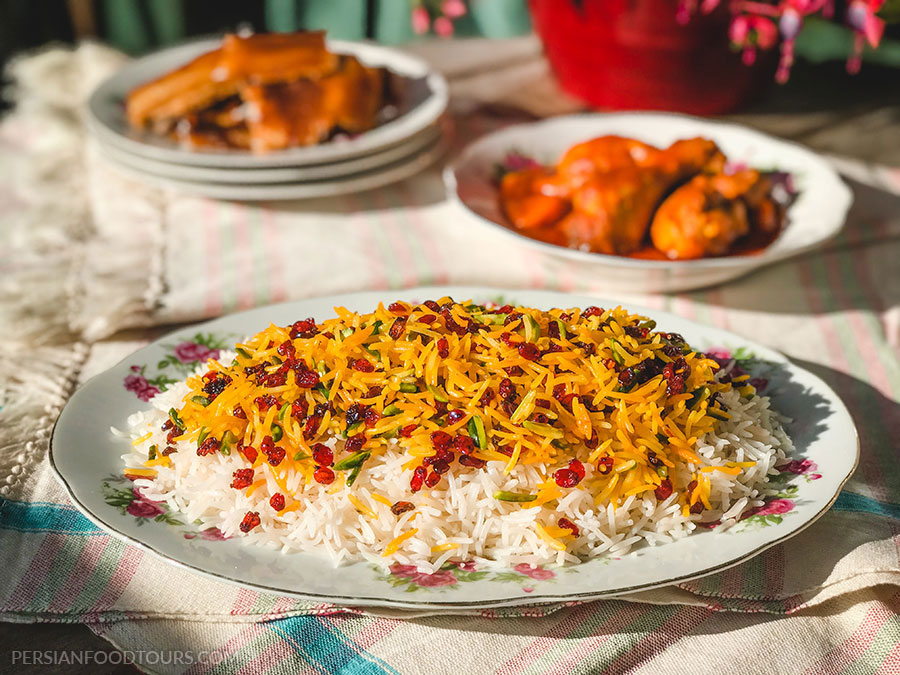
What is saffron?
Crocus Sativus grows in special weather conditions, in hot-dry climates and needs full sun. Its corms should be planted by hand one by one. When the Crocus Sativus grows up to 20-30 cm, usually three years after plantation, three or four violet-blue flowers appear on each corm. Each of these flowers has two or three red stigmas. Saffron actually is these red stigmas.
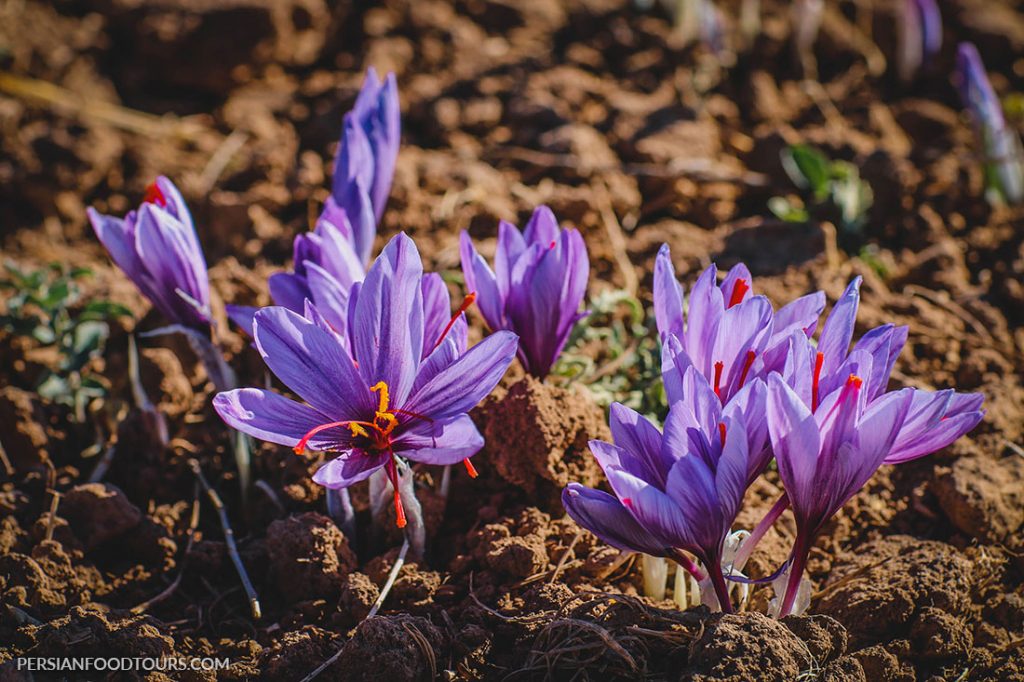
The red gold is harvested once in a year for 10-20 days in autumn. Harvesting stigmas is an interesting process. It starts before sunrise before the petals of flowers fully bloom. So, for having a high quality saffron, farmers have only a few hours to pick the stigmas by hand. After that, the red parts of stigmas should be separated from the white end parts. Then the vividly red stigmas are ready to be dried quickly in special conditions without direct sunlight and heat.
Normally, each field of saffron can produce saffron from the same corms for up to seven years. After that, the soil becomes so weak in certain minerals that no saffron can be grown in it for at least up to 20 years. The strength of the roots of corms, thickness and length of stigmas, time of harvest, and the process of drying them are the factors affecting the quality of this valuable spice.
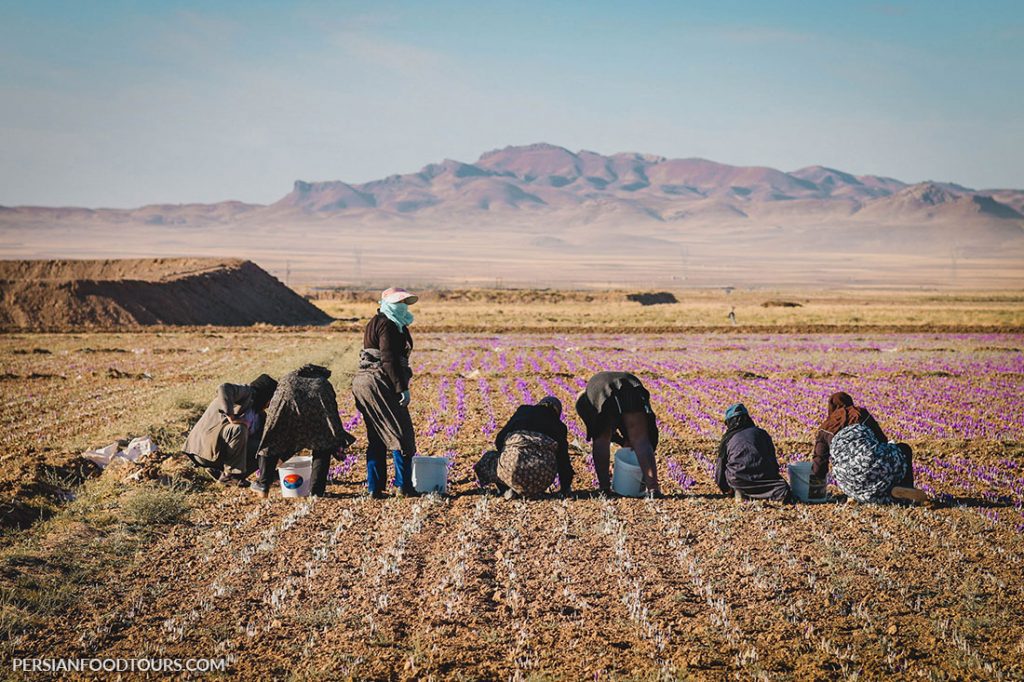
Saffron has a hay-like fragrance with a slightly bitter taste and goldish-yellow hue. Its luxurious taste and color beside its extreme aroma made it as a subtle condiment that has numerous usages. This expensive spice is mostly used in the food industry as it pairs well with various dishes. It is also used for medical and pharmaceutical purposes, or in producing beauty cosmetics, perfumes, and dying.
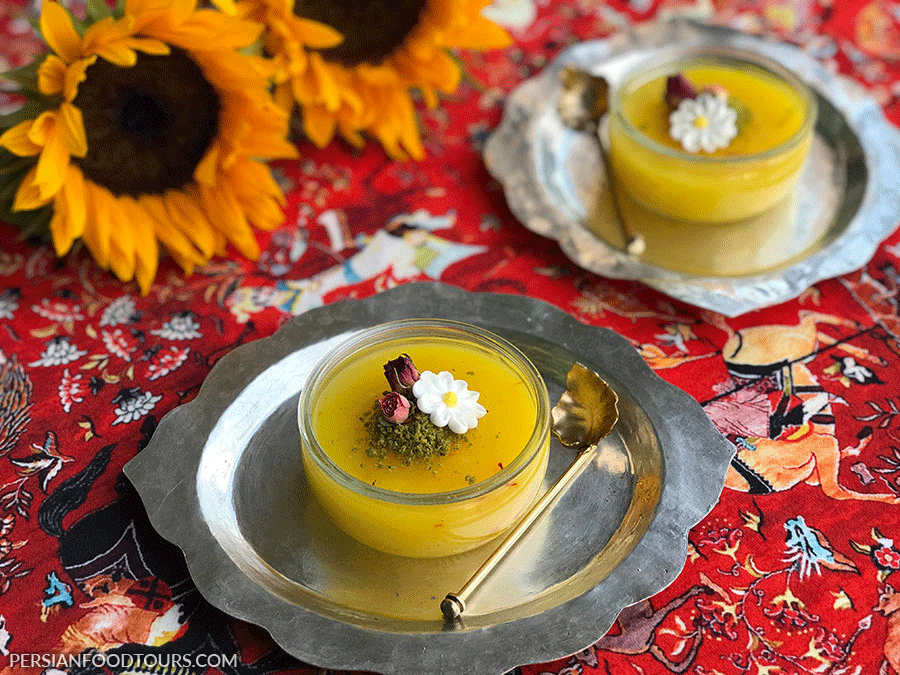
What is saffron used for?
Saffron is rich in plant compounds and minerals which is why it has impressive health benefits. It is widely used in baking, medicines, and industry. This spice is a strong and powerful antioxidant that protects the body against free radicals and minimizes cancer risks.
It can boost the energy level and improves the mood, as it has antidepressant properties. It can reduce both physical and emotional Premenstrual Syndrome (PMS) symptoms, such as headaches, pains, irritability, and anxiety. Studies also proved that saffron improves eyesight.
Studies showed that this red spice can protect brain cells and improves memory function in aiding Alzheimer’s disease. It has anti-aging effects and can brighten skin, which is why it is used in beauty cosmetic productions.
Although it has lots of benefits, there are some dosage limitations for using this beneficial spice. You can consume up to 1.5 grams of saffron per day. This amount is 20 milligrams for pregnant women as it may cause miscarriage. It is worthy to mention that high dosages of saffron, five grams or more, is toxic and it can cause headache, agitation, low blood pressure or even cardiac arrest and death.
Where is the origin of saffron?
Although the origin of this elegant spice is not clear, it is thought to be planted and harvested in Asian botanical gardens for about 4000 years. Iran, Spain, India, and Greece as the major producers domain the trading world. Iran, by far, is the main producer and Iranian saffron is known for its superior quality in the world. Around 90% of Iranian saffron is mainly planted and harvested in Khorasan Province, in the north-east of Iran. Ghayen, Torbat-e Heydarieh, Birjand, and Ferdows are the key cropping areas of this valuable spice.
Why is it so expensive?
From past to present, saffron is considered as an elite and valuable spice; it costs about 500 U.S. dollars per kilogram. But what makes it to have a hefty price?
Saffron is a specially rare spice. Growing and harvesting qualified saffron is not easy, as it needs distinctive conditions. It might be interesting to know that, for having one kilogram of these stigmas, 150000 flowers and 400 hours of hand-picking is required. So, both laborious and time-consuming harvesting process beside too many needed human resources made saffron, the most precious spice in the world.

How to tell real saffron from a fake one?
Since saffron traded as a valuable spice in the world, its high price resulted in many fraudulent activities in selling fake saffron. There are several ways to assure you about the purity of this precious cooking element.
The first way is testing through tasting. When you put stigmas on your tongue, it will have a sharp bitter taste. If you taste a sweet flavor in your mouth, unfortunately, the saffron is fake. The other key way is the aroma of the red gold. In even small amounts, this spice has a distinctive hay-like fragrance with sweet notes of honey. Then there is the color. Genuine stigmas are red and will not lose their color after putting them in cold water. They will give a bright goldish-yellow color to the water. But the fake ones will lose their added color and make the water deep red.
Another way is to put some stigmas on a piece of paper and crush them by your fingers. If the paper gets oily, it means that the stigma is not pure. The obvious way is by looking at the price. When the price is low, it is highly probable that it is fake. But the easiest way is to rub stigmas between your fingers. After getting moistened, your fingers will turn red or orange.
It is good to know that the grounded form of this spice is probably fake and it is mixed with turmeric, paprika, beet powder, or even silk fibers. You can find genuine saffron in Attaris (shops selling medicinal plants and herbs) or in shops selling dried nuts and fruits.
How do we prepare it?
To amplify the fragrance, it is better to heat stigmas for a few minutes. Then put them in a grinder, add a pinch of sugar to help the stigmas to get grind better and release stronger color. On the next level, add 1/4 cup (0.95 liters) of boiling water and let it rest for 20 minutes.
There is another interesting way to prepare saffron to get a richer color and aroma. In this method, you should use ice instead of boiling water because its molecules get activated at lower temperatures. So after grinding, put some cubes of ice on it and let it melt by itself in the room temperature. Now your saffron is ready to act as a magical coloring and seasoning agent in your savory dishes.
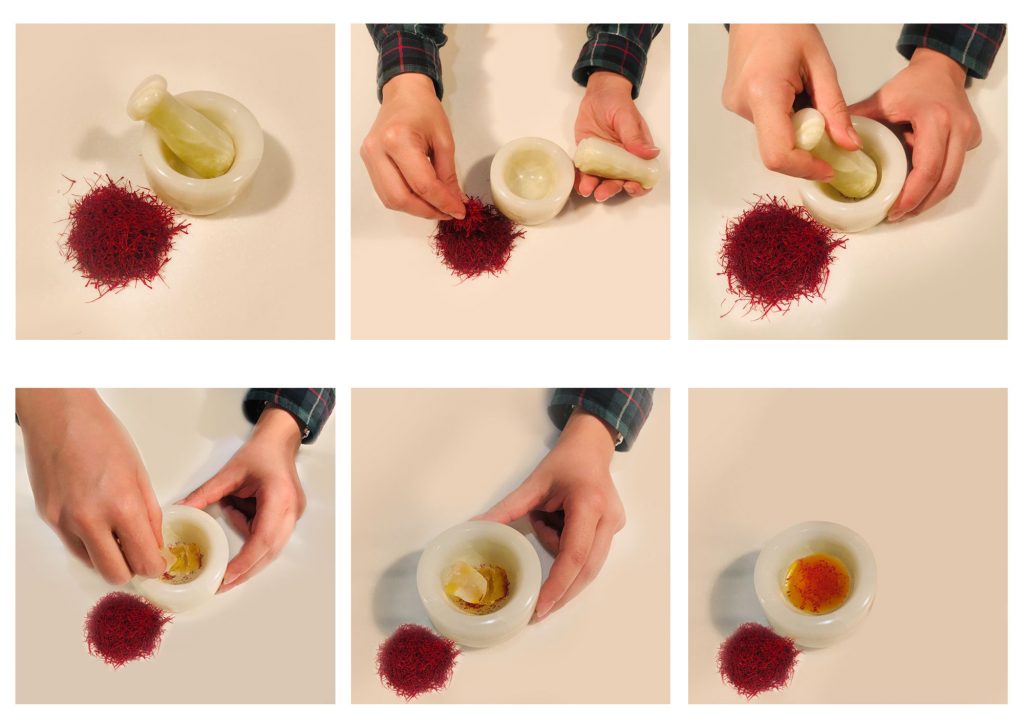
Saffron is an essential flavoring and colorant ingredient for so many dishes around the world like French bouillabaisse, Indian biriyani rice, Spanish paella. But it has a special place in Persian cuisine for its distinctive flavor and attractive deep yellow color. This legendary spice is used to garnish Persian rice, to add enchanting flavors. It’s also added to Sharbats and drinks, or used for energizing cakes and desserts like Bastani (traditional ice cream) or to give a mesmerizing color to Shole-Zard (saffron rice pudding) and Persian Halva.





Customer
tks